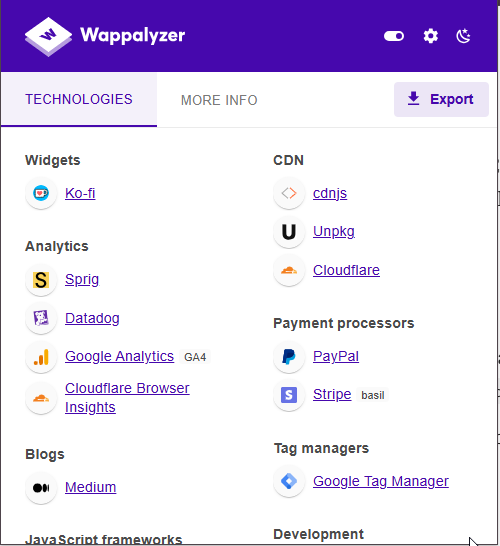Disclaimer : This blog is for learning only; never test systems without explicit permission. Always work ethically, follow applicable laws and company policies, and use responsible disclosure when reporting vulnerabilities for safety and professionalism, always. If you are really interested in VAPT, take the next 5 minutes to read this blog fully.
Welcome to VAPTify👋
Hello everyone! Welcome to VAPTify — your space to learn Vulnerability Assessment and Penetration Testing (VAPT) from beginner to advanced. I have about two years' practical experience across Web, Mobile, API, Network, and Cloud VAPT. Here we'll go step by step through how I started and how you can begin. Whether you're curious about finding vulnerabilities or securing systems ethically, this blog is for you.🔒
Let's start Web Vulnerability Assessment and Penetration Testing (VAPT)
What is Web VAPT? 🤔
Web VAPT is the process of defining the scope and systematically identifying, validating, and safely exploiting security weaknesses in web applications to improve their overall security. It involves both automated tools and manual testing, focusing on vulnerabilities highlighted by the OWASP Top 10 framework.
Open Web Application Security Project (OWASP) Framework
The Open Web Application Security Project (OWASP) is a global initiative that publishes resources to help developers and security professionals understand and fix common web application vulnerabilities. Its Top 10 list highlights the most critical risks to web applications, making it a must-read for beginners. You can explore the full list and learn more here.

Web VAPT Testing Methodology — Overview
For the Web Security Assessment, we'll follow a simple, step-by-step approach. I'll walk you through each phase so you can understand what to do, why it's important, and which tools or techniques you can use at each stage.

- 🔍Information Gathering (Recon)
- Objective: Learn about the target's structure, technologies, and external assets.
- What to do: Enumerate subdomains, discover endpoints, check public repos, and fingerprint frameworks/libraries.
- Tools: Wappalyzer (or Wappalyzer browser extension), builtwith, dig, crt.sh, netcraft, and simple manual inspection.
2. 🧭R
- Objective: Find known weaknesses and misconfigurations in components and endpoints.
- What to do: Run automated scanners to detect common issues, map responses, and identify input points (forms, APIs).
- Tools: Nikto, OWASP ZAP, Burp Suite (scanner + proxy), nmap for associated hosts, and dependency scanners (like retire.js).
3. ⚠️Vulnerability Exploitation
- Objective: Safely verify the impact and exploitability of discovered issues.
- What to do: Attempt controlled exploitation to confirm the flaw (e.g., proof-of-concept payloads for XSS or SQLi). Always avoid destructive actions.
- Tools/Techniques: Burp Intruder/Repeater, manual payload crafting, SQLMap (careful), and browser devtools.
4. ✅Vulnerability Verification
- Objective: Validate findings, reproduce them, and assess real-world impact.
- What to do: Reproduce the vulnerability step-by-step, capture evidence (screenshots, request/response pairs), and determine severity and exploitability (low/medium/high/critical).
5. 📝Reporting & Remediation
- Objective: Communicate findings clearly and propose fixes.
- What to do: Create a report containing vulnerability descriptions, steps to reproduce, proof-of-concept, risk impact, remediation guidance, and retest instructions.
- Tips: Be concise, technical where needed, and include prioritized recommendations.
Example walkthrough — using example.com as scope🧪🌐
Let's take an example website and see how to initiate a Web VAPT assessment. For this example, we'll use example.com as our target.
- 🎯Scope & Rules
- Scope:
example.com(assume this is in-scope for practice). - Important: confirm allowed hosts and testing windows with the owner. Never test outside the agreed scope (e.g., other subdomains or public IPs like
*.example.com) without explicit permission.
2. 🔍Information Gathering
- Use Wappalyzer to identify the dependencies and technologies used by
example.com. - Gather endpoints and internal components (look for
/login,/api/,/admin, etc.) and note any public repos or exposed files.

3. 🧭R
- Based on the information gathered if the
/loginendpoint is publicly accessible. - In the login page or search parameter we need to test the vulnerabilities like SQL Injection, XSS etc.. Start with passive scans (no intrusive payloads) to gather information, then — only on authorized, non-production endpoints — run active scans and check client-side JS files, server headers, and libraries for outdated components or known vulnerabilities.
4. ⚠️Vulnerability Exploitation
- In the applicaiton search parameter :
example.com/?search=is vulnerable to potential XSS , craft a harmless proof-of-concept (e.g.,<script>alert(1)</script>) and confirm in a controlled environment. - For the login endpoint
example.com/loginan auth bypass candidate, test logically (session tokens, predictable IDs) without causing harm. Document every step.
5. ✅Vulnerability Verification
- Reproduce the issue with clean steps and capture screenshots, request/response pairs, or a sanitized PoC. Rate impact: can this lead to data theft, account takeover, or remote code execution?
6.📝R
- Draft clear finding entries: Title, Affected URL(s), Severity, Steps to Reproduce, PoC (sanitized), Root Cause, Business Impact, and Recommended Fix.
Follow for the next blog where we will deep dive into Web Vulnerabilities step by step. 🌐🔍
Follow VAPTify for more beginner to advanced VAPT tutorials! 🔒
Share your thoughts on comments to improve us:)


